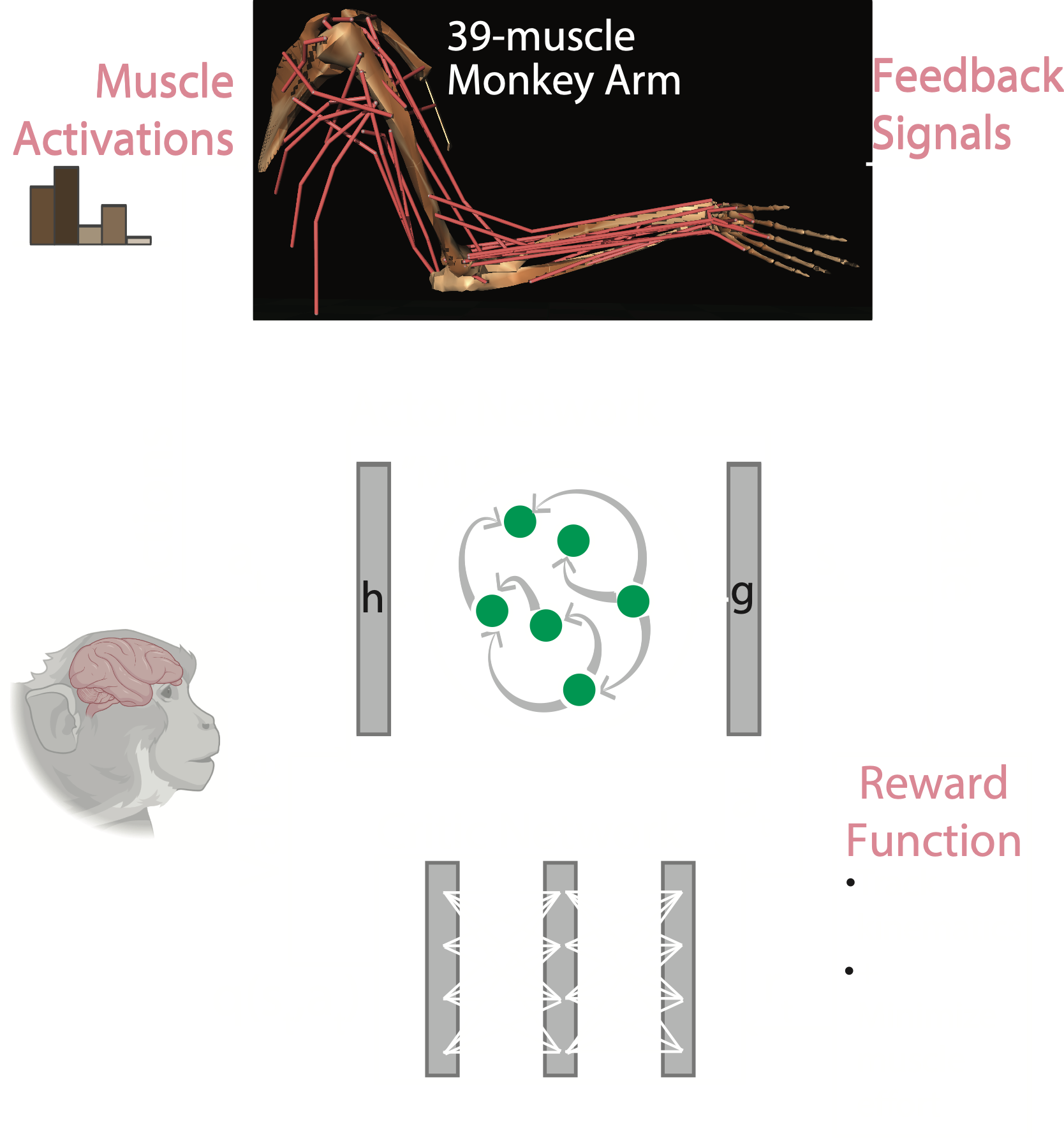Elucidating Principles of Sensorimotor Control
NIH funded project
(see funding) Breakneck advances in hardware and machine learning techniques have led to vast improvements in our ability to record and model large-scale multi-regional neural data. Our broad research goal is to advance the current state-of-the-art for modeling the neural control of movements by incorporating large-scale measurements and biological constraints into theoretical models of sensorimotor control.
To that end, we are developing biologically-inspired goal- and data-driven artificial intelligence methods to elucidate the neurodynamical basis of sensorimotor control[1][2][3][4]. Using these tools, we hope to elucidate principles of sensorimotor control by incorporating recorded neural data in succinct and interpretable biologically-inspired models of the relationships between the measured biological data and the corresponding behavior.
This is a critical step towards:
(a) elucidating the computational role of neural activity from different brain regions in controlling complex behavior,
(b) allowing us to further refine theoretical models of movement generation based on data, and
(c) understanding where and how to stimulate the brain in order to efficiently apply neurostimulation for achieving desired behavior.

[1] Saxena S.*, Russo A.*, Cunningham J., Churchland M. “Motor cortex activity across movement speeds is predicted by network-level strategies for generating muscle activity” eLife, 2022.
[2] Almani, M.N., Saxena, S. “Recurrent neural networks controlling musculoskeletal models predict motor cortex activity during novel limb movements” 2022 44th Annual International Conference of the IEEE Engineering in Medicine & Biology Society (EMBC), 2022.
[3] Almani, M.N., Saxena, S. “Deep Reinforcement Learning mimics Neural Strategies for Limb Movements” Cosyne, 2022.
[4] Warriner, C., Fageiry, S., Saxena, S., Costa, R., Miri, A. “Motor cortical influence relies on task-specific activity covariation”, Cell Reports, 2022